Global Positioning System or “GPS” was originally developed by the US Air Force to assist them with the military operations. GPS has made a significant impact on all positioning, navigation and monitoring applications in the world and over the course of the decades, it has evolved to a point where it is used in almost every aspect of our lives. The journey of GPS started with Sputnik in 1957 when Soviet scientists launched the very first satellite into space. The scientists at MIT discovered that the frequency of the radio signals emanated from the Russian satellite changed based on its location. The event also known as the Doppler Effect gave the scientists the idea that the location of satellites in orbit can be tracked from the ground by measuring the changes in the frequency of the radio signals. What seemed like a monumental loss in the technology race turned into a massive advantage in the hands of the accomplished scientists at MIT. They immediately started working on a new satellite system that would allow the US army to keep track of strategical locations and targets on the ground. TRANSIT was the first satellite navigation system built by the US Navy to locate US submarines carrying nuclear missiles in 1959. With the help of private tech companies like Aerospace Corporation, the military started working on another system; a series of satellites in orbit that send signals to receivers on the ground continuously. After 11 years of research and development, the US Air Force launched the first satellite of the 24-satellite navigation system called NAVSTAR.
An unfortunate incident that happened in 1983 changed the fate of the GPS technology forever. Korean Air Flight 007 wandered off course into Soviet airspace and was shot down shortly after. Following the aftermath of the event, President Ronald Reagan signed an executive order to make GPS available for civilian use to improve navigation and air safety once it is fully operational. Another significant event in the history of GPS is the removal of selective availability that was in effect since the first Gulf War by Bill Clinton in 2000. Since then, the US military expanded the size of the constellation to 31 satellites – 27 active and four spares in case of a malfunction – orbiting Earth and increased the accuracy of the GPS signals significantly.
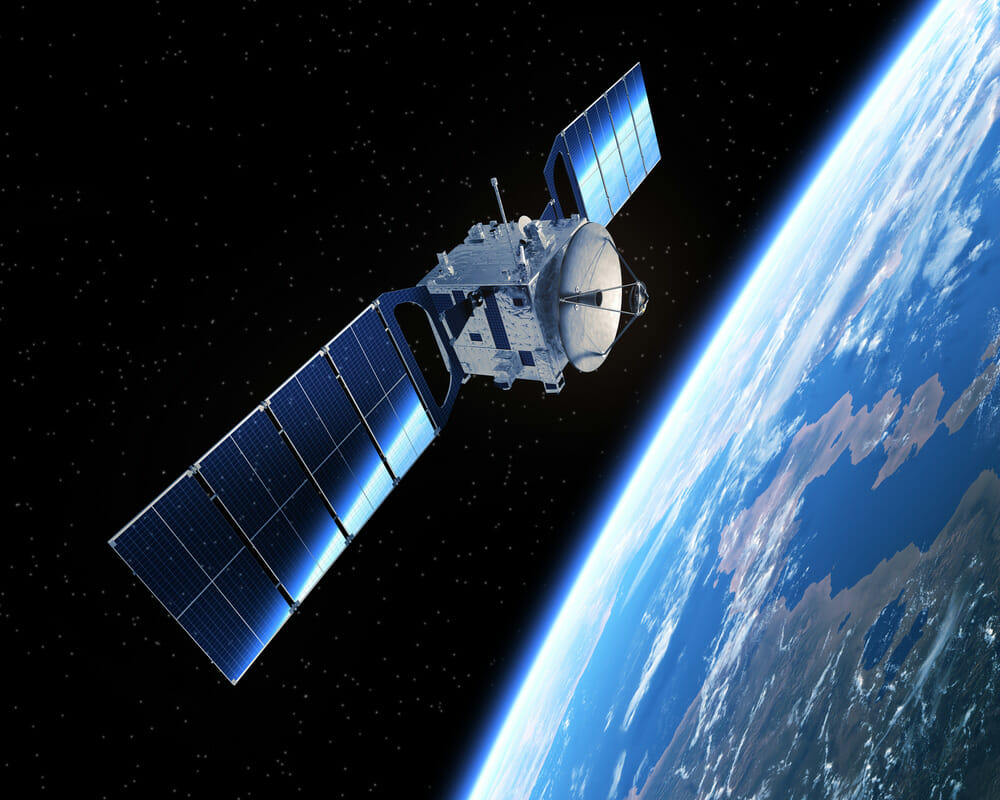
Private tech companies and the DoD kept working on the development of GPS-based applications, and the result is the wide-range of devices we use in our daily lives.
So how does a GPS tracking device work? GPS units use a method called trilateration to determine the position, speed, and elevation of an object. GPS satellites broadcast their location and time constantly, and every satellite has a sophisticated atomic clock inside to be used for timing calculations. Tracking devices calculate the distance and time that it takes the GPS signals to travel to the surface from the satellites. The device requires signals from at least four satellites to provide an accurate location. With this in mind, the GPS satellite system was designed to have a minimum of four satellites in range for users with a clear view of the sky. Data from additional satellites further enhances the accuracy of the location. Each satellite is powered by solar energy and orbits the Earth twice a day, transmitting signals regularly.
As the GPS technology improved, various industries have started adopting the advanced tools it introduced to the market. Especially for the vehicle industry, GPS tracking systems have been a groundbreaking development. Today, tracking devices are being used for many purposes; mainly to monitor the movements of people, vehicles, and assets. Features such as real-time tracking, route history, geofence zones and event alerts allow users to provide personal safety measures for family members and enhance vehicle security. Fleet companies use the data provided by GPS and telematics devices to reduce operational costs and enforce better driving habits. On the other hand, concerned parents and family members employ the services of personal locators to keep an eye on their loved ones. The ability to track the location of a person in real-time and receive instant notifications of important events make personal tracking devices one of the best safety systems on the market.
When it comes to selecting the right GPS tracker, there are mainly two options you can choose from; battery-powered also known as portable trackers and hardwired tracking devices. Each type comes with its own set of advantages and disadvantages, and they can be used for different purposes. Portable trackers are the go-to device for keeping track of a person or an object. Innovations in the field introduced devices with longer battery lives and access to a wealth of information. Portable devices can also be moved from one object to another easily and with optional magnetic cases; the placement options are limitless. Hardwired tracking devices are more suitable for tracking vehicles, and they need to be connected to a power source. The go-to place for a hardwired tracker is under the dashboard where it can be attached to the car battery discreetly. While they are not mobile, hardwired trackers are less susceptible to tampering and provide better accuracy when locating a target. Fleet companies prefer wired tracking devices; with additional sensors and access to the vehicle engine computer, these trackers provide the necessary information to eliminate the causes of fuel waste, get ahead of driver related problems and lower maintenance expenses.
GPS is an abbreviation for Global Positioning System. This term basically means a navigation structure which is used for the accurate location of an individual or a vehicle (Zap, 2008). The device which is usually used for this purpose is a GPS tracking system unit.
This unit can be used to tell the precise location of a person or any vehicle, whether it is stationary or moving. The GPS tracking unit records the data within the unit and then transmits it to a central server with the help of a satellite modem which directly fits inside the unit. The unit can be used to view the position of any person or vehicle in a real-time scenario (or later) whenever it is necessary to check the situation of any vehicle (Smith, 2006). The software used for this purpose is called GPS tracking software which helps to view the location of any target intended. Nowadays, mobiles having the GPS capability are being used to track the precise position of any person with the help of GPS software which is specifically designed for mobile systems.
There are basically three types of GPS tracking devices which are as follows:
- Data pushers
- Data pullers
- Data loggers
Data pushers
The data pushers are those types of GPS tracking units which are usually used for any personal tracking, asset tracking or the tracking of any type of vehicle. In case of personal as well as asset tracking, the location of any specific person or vehicle is sent to the server over short time intervals where the data is stored as well as examined closely (Zap, 2008). As far as the vehicle tracking is concerned, the GPS tracking unit not only sends the position of the vehicle to the server but is also able to analyze the speed at which the vehicle is in motion or any other data required. These units send all the important information to the server where all the required coordinates are analyzed clearly and then are stored in the device. These GPS trackers could be used by anyone, including security agencies in case they want to track a potential suspect or can be used by parents to track the position of their kids and thus remain informed of their children’s activities. Therefore, these types of GPS tracking unit devices are very important and useful.
Data pullers
The data pullers are employed for tracking the location same as data pushers. The main difference in both of these units is that the data pushers do not send any kind of information to the server, rather it is requested to send any required data. Also, the data pushers send the data at regular intervals, however, the data pullers are always on and could be used to retrieve data at any time.
Data loggers
The data loggers are used to store the position of any vehicle or person in its internal memory and do not send any data to a central server.
Therefore, all of the three types of GPS tracking units are very beneficial and helpful in tracking the exact location of any specified person, vehicle or fleet tracking.
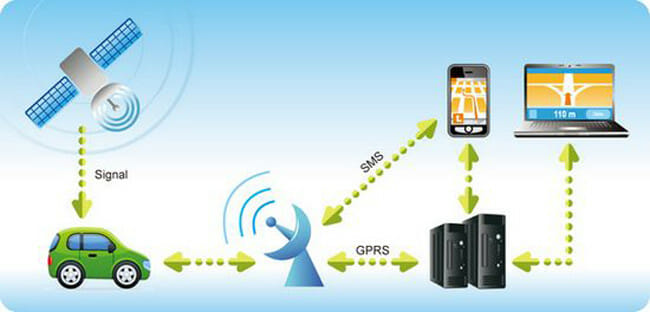
Understanding GPS Technology
When many people begin researching and learning about the various products offered throughout the GPS tracking industry they are often left feeling overwhelmed. Tracking System understands that there are many terms and words associated with vehicle management and GPS monitoring technology that parents, businesses, and police agencies will likely hear for the first time as they begin their journey into the GPS and telematics industries. This glossary was designed to help bring simplicity and understanding to many of the terms, words, and phrases frequently used throughout the GPS monitoring industry, providing a resource for anyone interested in a complete and comprehensive overview of GPS-related definitions.
A-GPS
A-GPS is an acronym associated with the term “Assisted-Global Positioning System”. Assisted GPS basically refers to the combination of both GPS satellite and cellular/wireless technologies. A-GPS is a term often associated with and used to describe how location-based data recorded onto a GPS tracker is transmitted.
Active
Active tracking is synonymous with the more commonly used term for real-time tracking. Active simply refers to having instant remote access to GPS tracking data.
Alkaline Battery
A form of battery often used in both the GPS Tracking Key (AAA alkaline battery) and GPS Tracking Key Pro (AA alkaline battery) models, alkaline batteries are the most commonly used form of battery in consumer electronics products. Known for having a long shelf life, alkaline batteries are also viewed as being high-quality sources of power.
Atomic Clock
Although the name sounds pretty intimidating, an atomic clock is simply a way of calculating time through the periodic movements of atoms. Atomic clockwork is utilized by Global Positioning System units to provide a timing mechanism that allows GPS accuracy to be calculated with precision.
Auto Theft Recovery
The process of safely recovering a vehicle or mobile asset if it is stolen. Real-time GPS trackers are often used by people looking for an auto-theft recovery/prevention system because the devices can alert users if a vehicle is moved, and the technology provides 24/7 access to an automobile’s location.
Auxiliary Power
Auxiliary power refers to the supplemental or secondary source of power that is used by a tracking unit or electronic device. This could refer to a GPS unit using an alternative source of power such as a cigarette lighter adapter to power the system rather than the device’s primary source of power, an internal battery system such as a lithium ion or alkaline.
Car Tracker
GPS vehicle management system that is used to monitor the movements of an automobile. Commonly used by parents to observe teen driving behaviours, businesses to monitor employee driving activity and police agencies to conduct surveillance.
Covert Surveillance
The behaviour or act of acquiring, observing or recording data or information related to the activities of another in a secret fashion. Private investigators and police departments have a fundamental need to gather information in a covert way, making vehicle tracking systems very popular among security professionals and law enforcement.
Drivers
A form of the computer program that has controlling power over a device or GPS unit. When GPS tracking devices are connected to a personal computer it may be necessary or required to load new drivers to ensure proper system operation.
Elderly Tracking
The process of monitoring and observing the driving habits and behaviours of a senior citizen in an effort to improve personal safety. Many families choose to hard-wire real-time tracking systems to the vehicles being operated by an elderly family member to ensure that the senior is driving safely or not becoming lost.
External GPS Antenna
An essential piece of equipment or hardware that is used to acquire radio signals from GPS satellites, external GPS antennas are designed separately from the monitoring device. Although the external antenna is independent of the GPS unit, it allows the GPS hardware to capture GPS signals. External antennas are popular among businesses looking for some versatility and flexibility in regards to the placement of the tracking device.
Fleet Management
The process of overseeing and managing numerous mobile assets and vehicles of a single company in an effort to improve routing, driver safety, customer service and overall company efficiency. Having remote access to all vehicles operating in the field provides companies with a way to safeguard equipment, control employee routes more effectively and reduces the costs associated with fuel consumption.
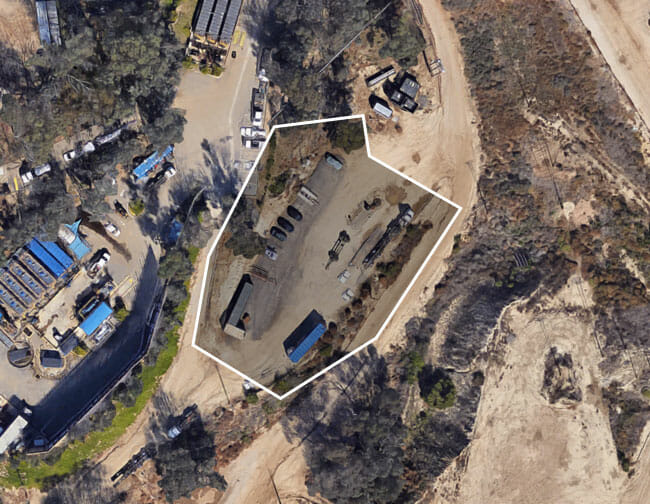
Geo-Fence
Geo-fence, or geo-fencing, is an alert feature that is common among many real-time tracking systems. Essentially how the feature works is by allowing the user to set a virtual boundary or “fence” around a particular area on a map. The alert is programmed into the GPS unit, and when the object/asset being monitored enters or exits through that virtual boundary an alert is sent to the GPS user via email or cellular text message.
Geotagging/Geocoding
The process of linking, connecting or tagging forms of digital media such as photographs, video data, RSS feeds or even web pages with geographical data that includes longitude and latitude positions acquired through GPS tracking. This feature is popular among outdoor adventurists who enjoy documenting their journeys and uploading the information for friends and family.
Global Positioning System (GPS)
The heart and soul of both the GPS vehicle tracking and GPS navigational industries. The most simplistic way to describe the Global Positioning System would be as an organized network of satellites orbiting the planet that were designed and are controlled by the U.S. Department of Defense.
Google Earth
Satellite image program designed and updated by Google that many GPS systems use as a primary source of showcasing recorded or live tracking data. The computer information program offers users access to historical imagery, street views, 3D buildings and more.
GPRS
GPRS are the acronyms for “General Packet Radio Services”, which basically is in reference to a form of radio technology used by mobile communication devices and networks that allow the transfer of data.
GPS Navigation Device
The most commonly used form of GPS technology, navigation systems are electronic devices that are often onboard vehicles and installed to an automobile’s 12-volt system and placed on the front windshield. The GPS receives satellite signals and uses that data to accurately determine position. The devices then work with mapping programs to help drivers with routing or directions. This form of GPS technology is perfect for those travelling to new places, or who commonly become lost.
GPS Tracking System
An electronic device that is used to capture location-based data and store the information to internal memory (GPS receiver/passive), or transmit the information where it can be accessed live remotely via the personal computer (Active/real-time). Using GPS satellites to accurately determine the position of a vehicle, asset or person, a GPS tracking system will record an assortment of location-based data ranging from speeds travelled, addresses arrived/departed, maximum speed travelled, stops made, time en route and more. GPS tracking systems are often described as the ultimate fleet management solutions.
GPX Format
The data format that allows GPS users to exchange files, regardless if the systems are supported by conflicting operating systems or programming software. GPX format provides users with a unique way to write, read and download routes.
GSM
A term used to define “Global System Mobile Communications”, which is currently the only form of cellular service offered throughout Europe. An international standard for digital mobile telecommunications systems, this form of technology was created to provide an alternative solution to analogue. Mobile communication devices and trackers that utilize GSM use SIM cards.
Hard-Wire
The connection between electrical wires/cables and a vehicle’s or piece of equipment’s circuit (Often 12-volt system in automobiles). This form of connection offers an alternative source of power that can keep a device powered by means other than an internal battery.
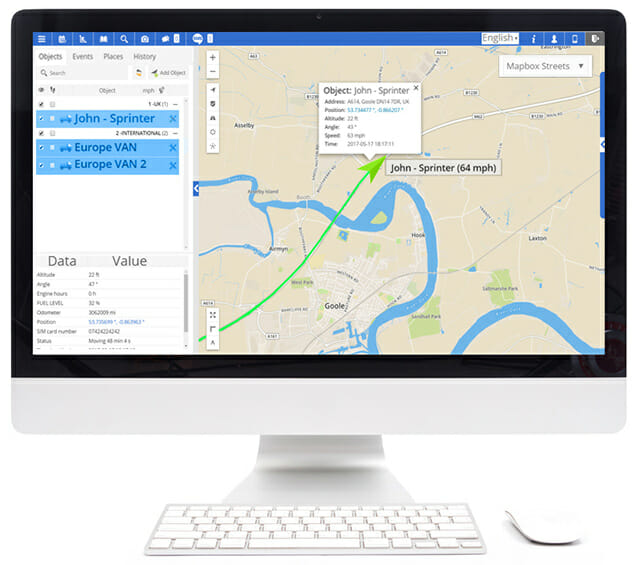
Interface
Reference to a point of interaction among a particular set of components. Applicable to both levels of hardware or software, an interface provides independent objects with the ability to communicate with each other via a connection, device or another form of a system. Past-Track monitoring software interfaces with Google Earth software, allowing a GPS user to view recorded GPS data over the satellite image program.
Internal Antenna
A piece of hardware that is essential in acquiring GPS signals so a system can calculate data. Unlike an external antenna, internal antennas are designed into the GPS unit itself. This engineering design allows tracking devices increased portability.
Lithium Battery
One of the newest forms of battery technology, lithium-ion batteries provide long-lasting power and are much lighter than alkaline batteries, making them much more efficient for high-tech systems. Lithium batteries have a long shelf-life, and most importantly are not susceptible to leaking like alkaline batteries.
NMEA
Acronyms for the “National Marine Electronics Association”, a unifying force behind the electronics industries that provides a file extension format that is an industry standard. Initially developed to aid in marine electronic equipment in the 1908s, the technology is now common among GPS technological systems.
Operating System (OS)
Software consisting of multiple data and programs that basically operates on computers and manages hardware. Some of the most common operating systems people utilize every day on their personal computers include Microsoft Windows programs and Mac OS X. However, Google has been in the process of creating an OS that many people believe could be one of the efficient.
Passive Tracking System
Commonly labelled as data loggers or receivers, passive trackers record GPS data and store that information in internal memory for review at a later time. The data from a passive tracker is manually downloaded view USB port or download cable, resulting in the system being much more cost-effective and not having monthly service fees. The GPS Tracking Key and GPS Tracking Key Pro are the two most popular passive tracking systems among consumers and businesses.
RFID
Radio Frequency Identification: A form of technology that utilizes radio frequency tags that are connected to objects that will transmit information or data to a receiver.
Triangulation
Real-Time Tracking
A form of GPS tracking that allows users to remotely access GPS data live as it happens. The real-time tracking unit receives GPS signals and then transmits that information via wireless networks, allowing users to have instant access to the location of a person, vehicle, asset or object. This form of GPS tracking is commonly used in fleet management and auto-theft recovery applications.
Sampling Rate
The frequency or rate in which position updates are acquired and stored in the internal memory of a GPS receiver. Think of the sampling rate like “breadcrumbs” strong across a path, independent pieces of data that are used in conjunction with one another to provide GPS users with a way to monitor travels.
Satellite
Both a natural (When planets revolve around a star such as a sun) and unnatural phenomenon (Object created by man such as a space probe) where a particular object revolves around another object in regular intervals. Satellites are used for a variety of communication purposes.
Short Message Service (SMS)
A form of technology that is similar to that used by paging systems, SMS provides an avenue to send short text messages electronically to mobile communication devices such as cellular phones. Although the amount of data is often limited by a set number of characters, it is one of the most efficient ways to transmit data and alerts from a real-time tracking device to a user’s personal cell phone.
Teen Tracking
The process of monitoring the driving habits of teenagers to improve teen safety and overall road safety for everyone sharing the highways and roadways. With many teens having a tendency to drive at dangerous speeds, and motor vehicle accidents leading the list of causes of premature death among teenagers, parents are utilizing both real-time tracking and passive monitoring to observe teen driving behaviours.
Telematics
Telematics basically refers to the technology of transmitting, receiving and storing data or information between telecommunication systems. Also referred to as telemetry, telematics plays a significant role in the GPS tracking industry because the technology is often used to describe the use of GPS vehicle management or navigational systems since the devices integrate computer and wireless technologies along with mobile communication systems for data transfer and reception.
The sophisticated process of accurately determining the exact position of a GPS receiver operating on Earth by using a mathematical system that measures distance via relative space between three GPS satellites orbiting in space. When a GPS system is placed in an optimum location where it has a direct line of sight to the sky, the process of triangulation results in GPS tracking data is accurate within 2.5 meters.
USB Port
Universal Serial Bus Ports are referred to as a standardized electrical point of connection on a personal computer that provides an avenue interface to numerous other electronic equipment such as printers, scanners, keyboards and more. Passive vehicle tracking devices such as the GPS Tracking Key have a USB drive engineered into the hardware, allowing users to connect the GPS system directly to a personal computer USB port to manually download GPS tracking data.
WAAS
Established in the mid-1990s by the Department of Transportation, Wide Area Augmentation Services (WAAS) refers to a system that was created to boost accuracy and the availability of both GPS navigation and tracking data. Ground stations were developed and strategically placed throughout the country to monitor and observe GPS satellite signals, accounting for any gaps in service or errors, resulting in WAAS-enabled GPS receivers having a superior accuracy of location-based data and position.
Water Resistant
One common misconception is that water resistant is the same as waterproof. IT IS NOT! Water resistant refers to a limited ability to keep moisture off hardware, circuitry and GPS components. People looking to use a car tracker that is water resistant on the outside of their vehicle should take additional precautions to safeguard their GPS tracking unit from the elements.
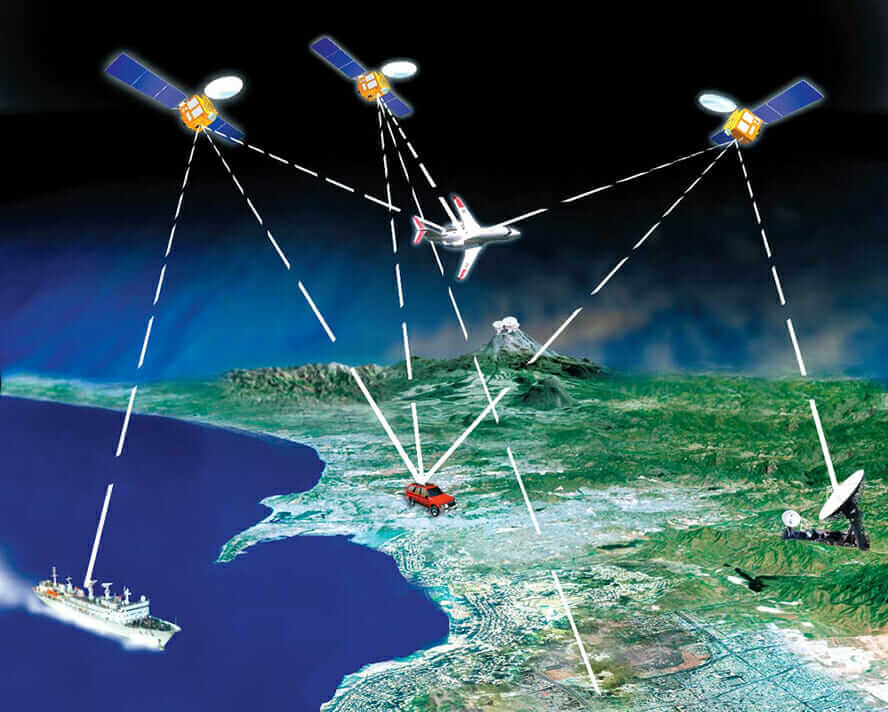
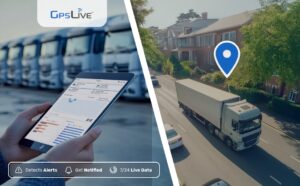

This article is extremely informative. Thanks for providing such valuable information about GPS tracking.
Very insightful article on GPS.